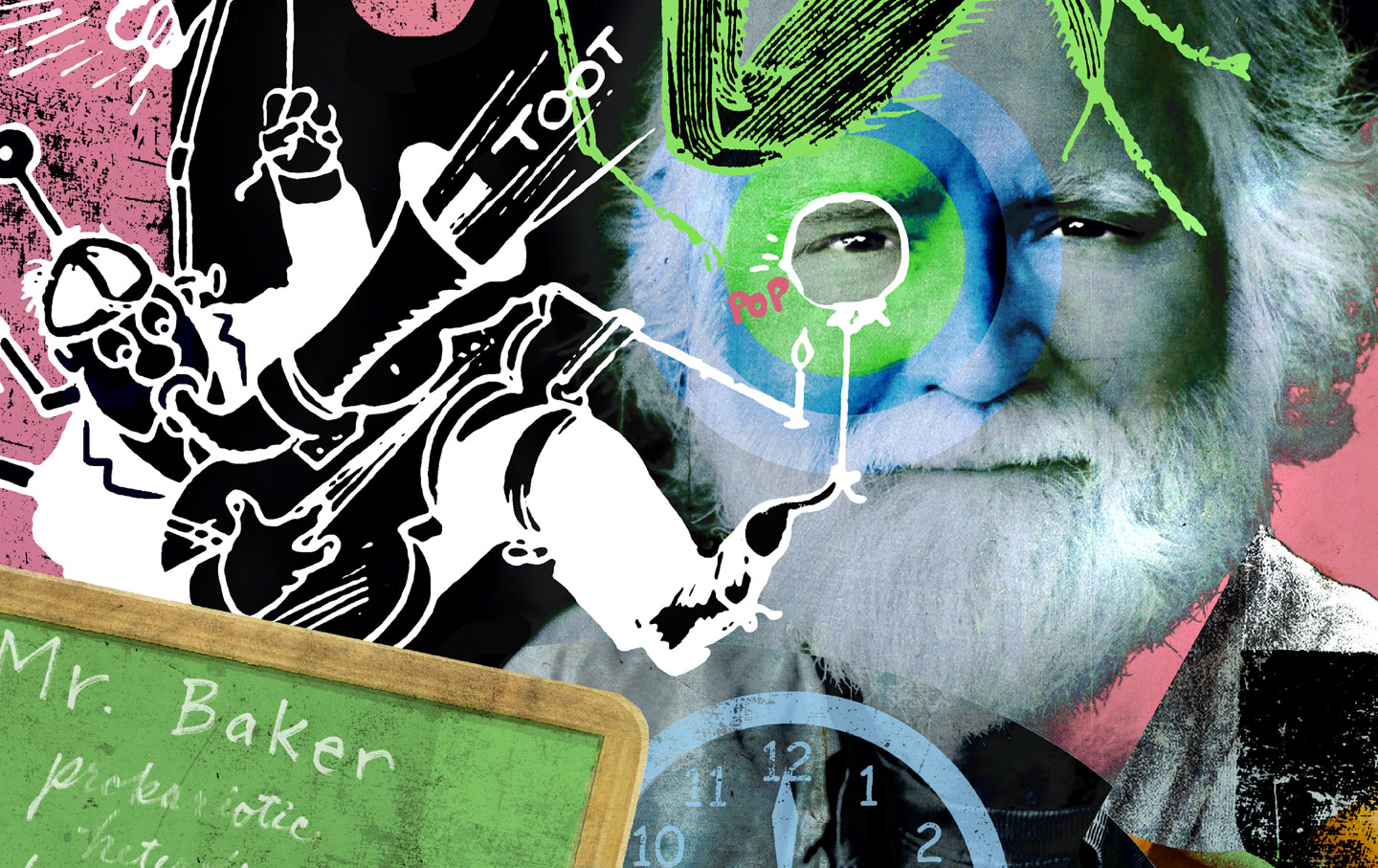Everything Is Interesting
Nicholson Baker goes back to school.

But what sets Baker apart from his peers is how genuinely odd he is. He is driven by a rather singular set of obsessions, and his writing, though always finely crafted, often feels compulsive, as if his mind were a perpetual-motion machine unable to bring itself to rest. Consider this description of a sweater from his second novel,
Room Temperature:
a brown monster stout with various fugal inversions and augmentations of the standard cable knit, and consequently glutted with insulational dead air, its corona of lighter outer fibers frizzing out three-eighths of an inch or more from the slubbed and satisfyingly clutchable weave that formed the actual structure underneath…
There is absolutely no reason to write about a sweater like this. We’re all familiar with sweaters, and the precision and minute detail found in Baker’s description doesn’t really help us to imagine this particular one. But what Baker is after is not verisimilitude; he is after a certain kind of experience derived from sustained and detail-oriented
attention. “Everything is interesting,” Baker argued in a recent New York Times Magazine essay. “You may think a certain thing is completely without interest. You may think, or I may think, eh, dull, boring, heck with it, let’s move on. But… You have to poke at a thing, sometimes, and find out where it squeaks.”
Baker’s attempts to poke things and find out where they squeak has led him to his two great subjects, the mundane and the erotic, both of which he limns in extraordinary detail. Roughly 50 percent of Baker’s novels are full of precise, elaborate descriptions of everyday activities: riding an escalator in The Mezzanine, feeding a baby in Room Temperature, waking up and getting dressed in A Box of Matches. The other half are filled with precise, elaborate descriptions of sex: phone sex in Vox; creepy, nonconsensual sex in The Fermata; raunchy, surreal cartoon sex in House of Holes, where a character has sex with, among other things, a tree. Half the time Baker’s Seinfeld, the other half he is Sade.
Baker has also carried this maniacal obsessiveness into his nonfiction. Starting with U and I, a 1991 memoir that meticulously documented his relationship to the work, but not the person, of John Updike, Baker built a second career as a literary journalist and nonfiction writer. In 2001, he wrote a polemic about the destruction of archival print media, Double Fold, that carefully reconstructed the look, feel, and smell of old newspapers, and seven years later, he published Human Smoke: The Beginnings of World War II, the End of Civilization, where he really climbed out on a limb: There are few shibboleths more powerful in Western culture than the idea that World War II was a “just war.” Baker, a radical pacifist, dared to not only question this consensus but exhume the voices of the dissidents, and he went to extraordinary lengths to unearth and give renewed meaning and power to Everything Is Interesting | The Nation:
